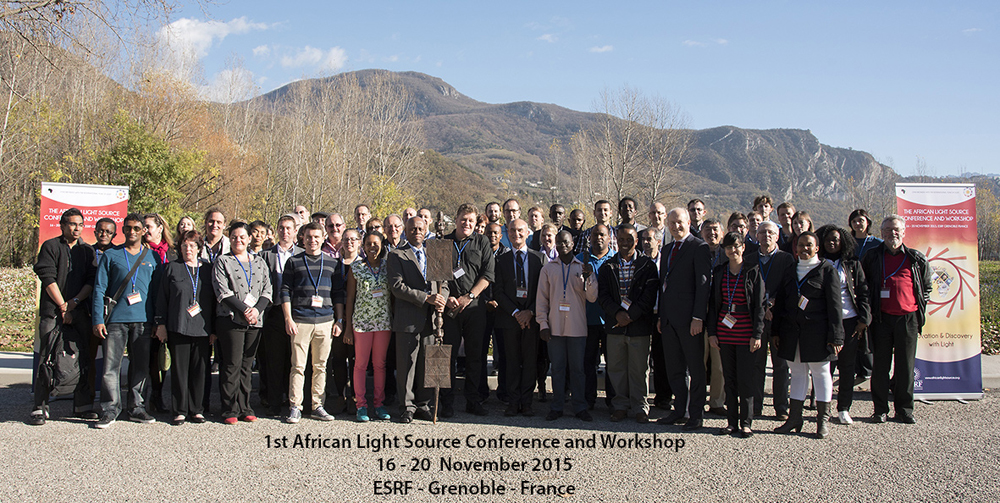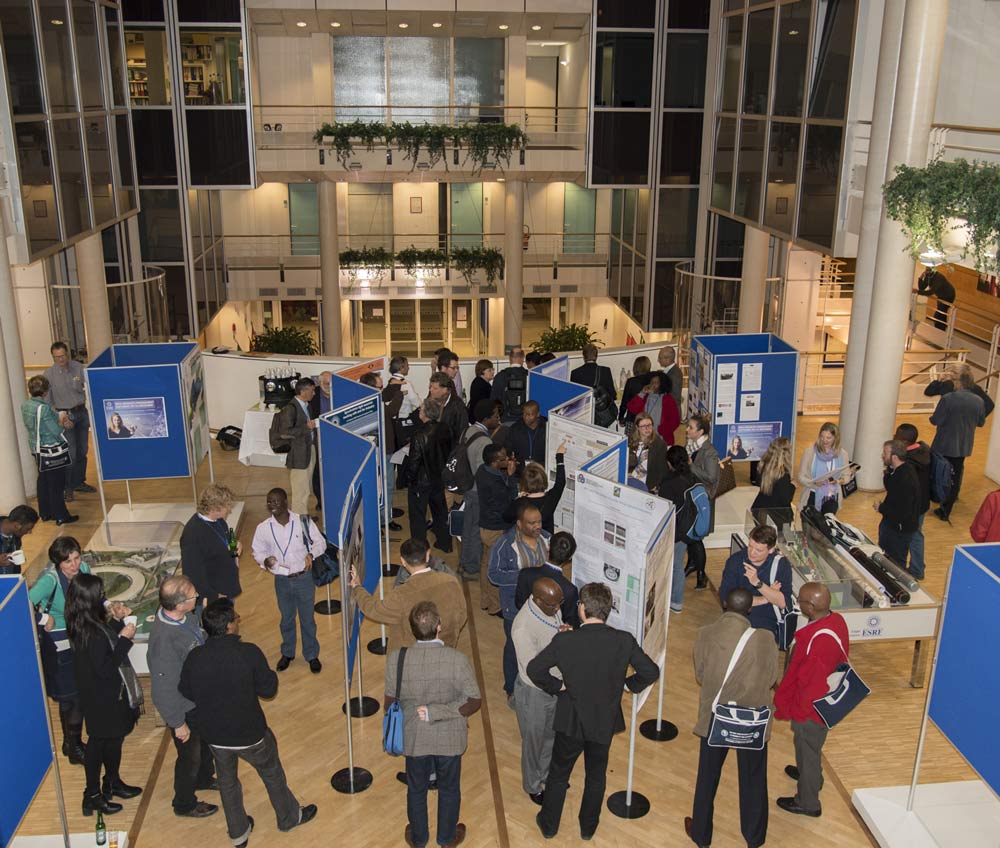- Home
- News
- General News
- Grenoble Resolutions...
Grenoble Resolutions mark historical step towards an African Light Source
20-11-2015
The first meeting of the African Light Source Conference and Workshop, hosted at the ESRF from 16-20 November, concluded with a set of resolutions as well as a roadmap with short-, medium-, and long-term goals defined to strengthen the light sources user community from the African continent and to initiate the process leading to the construction of the first light source in Africa. During this Conference, a fully mandated steering committee was elected to drive this roadmap.
Share
In the context of the 2015 UNESCO International Year of Light, more than 80 scientists from across the world and government officials convened at the ESRF for the first African Light Source (AfLS) Conference and Workshop. The first two days were dedicated to a scientific workshop, which had two functions. Firstly it showcased the contribution of light sources as premier tools for research, across many fields including industry. Secondly, it showcased the African contribution to research based at light sources. The scope of the research was very broad, and included research that addressed the social, environmental, economic and scientific challenges confronting Africa. Examples are studying disease and developing new drugs for malaria, HIV, tuberculosis and ebola, also energy technologies, climate and environmental sciences, materials science, physics, diverse fields of engineering, palaeontology and heritage studies. The three following days were dedicated to discussing the resolutions, setting up a roadmap towards a future African light source and installing a fully mandated globally elected steering committee which will drive this roadmap forward.
 |
|
Participants enjoy the last of the autumn sun on the ESRF site in Grenoble. |
As explained in conclusion by Simon Connell, chair of the organising committee, “The work carried out this week will lay strong foundations for a future Light Source in Africa and also, in the short and middle terms, it will reinforce the light source user community across Africa. Through the “Grenoble statement”, the African scientific community has clearly expressed its desire to work together to promote the use of light sources, towards the goal of establishing an African Light Source. The proposed roadmap is expected to contribute significantly to the African Science Renaissance, the return of the African Science Diaspora, the development of highly skilled human capital and the training of a new generation of young scientists, the growth of competitive African industries and the advancement of research that is relevant to Africa.”
 |
|
A poster session showcased the African contribution to research based at light sources. Credit: ESRF/C. Argoud |
As added by Sekazi Mtingwa, one of the innovative champions of the project, “Africa is the only habitable continent without a light source. If African countries want to take control of their destinies, be competitive socially, politically and economically and become major players in the international scientific community in the years to come access to a nearby light source will be an absolute necessity. The election of a steering committee and the drawing up of a clear roadmap give us an official mandate to discuss the feasibility of constructing an African Light Source somewhere on the African continent as a collaborative project akin to the Synchrotron-light for Experimental Science and Applications in the Middle East (SESAME) project. The time is therefore right for Africa to begin planning for the development of an African Light Source, which will broaden yet further its full participation in the global science endeavour.”
For Francesco Sette, Director General of the ESRF, “In the current international climate, a global discussion towards a collaborative African scientific project has high relevance. Science is an inescapable driver to peaceful relations among cultures and nations, a force for sustainability and a necessity in confronting the major challenges facing society today. The ESRF is proud to welcome this historical event. In 1988, the ESRF’s pioneers decided to create a European centre for scientific excellence, and a place where scientists from around the world could come together to advance on the frontiers of knowledge. Today, more than ever, scientists studying materials and living matter are called to work together and share tools in order to provide answers to the major challenges which need to be addressed for a sustainable and peaceful world. I’m convinced that this “Grenoble statement”, pushed up by scientists who share the same vision, will mark the beginning of an exceptional adventure for African Science and for the international scientific community. In this international year of light, what greater celebration of the power of light could one possibly hope for?”
Grenoble Resolutions towards the African Light Source
- Advanced light sources are the most transformative scientific instruments similar to the invention of conventional lasers and computers.
- Advanced light sources are revolutionising a myriad of fundamental and applied sciences, including agriculture, biology, biomedicine, chemistry, climate and environmental eco-systems science, energy, engineering, geology, heritage studies, materials science, nanotechnology, palaeontology, pharmaceutical discoveries, physics, with an accompanying impact on sustainable industry.
- The community of researchers around the world are striving collaboratively to construct ever more intense sources of electromagnetic radiation, specifically derived from synchrotron light sources and X-ray free-electron lasers (XFELs), to address the most challenging questions in living and condensed matter sciences.
- The African Light Source is expected to contribute significantly to the African Science Renaissance, the return of the African Science Diaspora, the enhancement of University Education, the training of a new generation of young researchers, the growth of competitive African industries, and the advancement of research that addresses issues, challenges and concerns relevant to Africa.
- For African countries to take control of their destinies and become major players in the international community, it is inevitable that a light source must begin construction somewhere on the African continent in the near future, which will promote peace and collaborations amongst African nations and the wider global community.
Roadmap Summary for an African Light Source
In order to make its vision a reality and fulfil its mission, the African Light Source (AfLS) Steering Committee has devised a roadmap with short-, medium-, and long-term goals, detailed in the document published on the Conference’s website. See the roadmap.
Related articles
ESRF Welcomes the first African Light Source Conference and Workshop
Top image: The wheels are in motion for the creation of an African Light Source.



